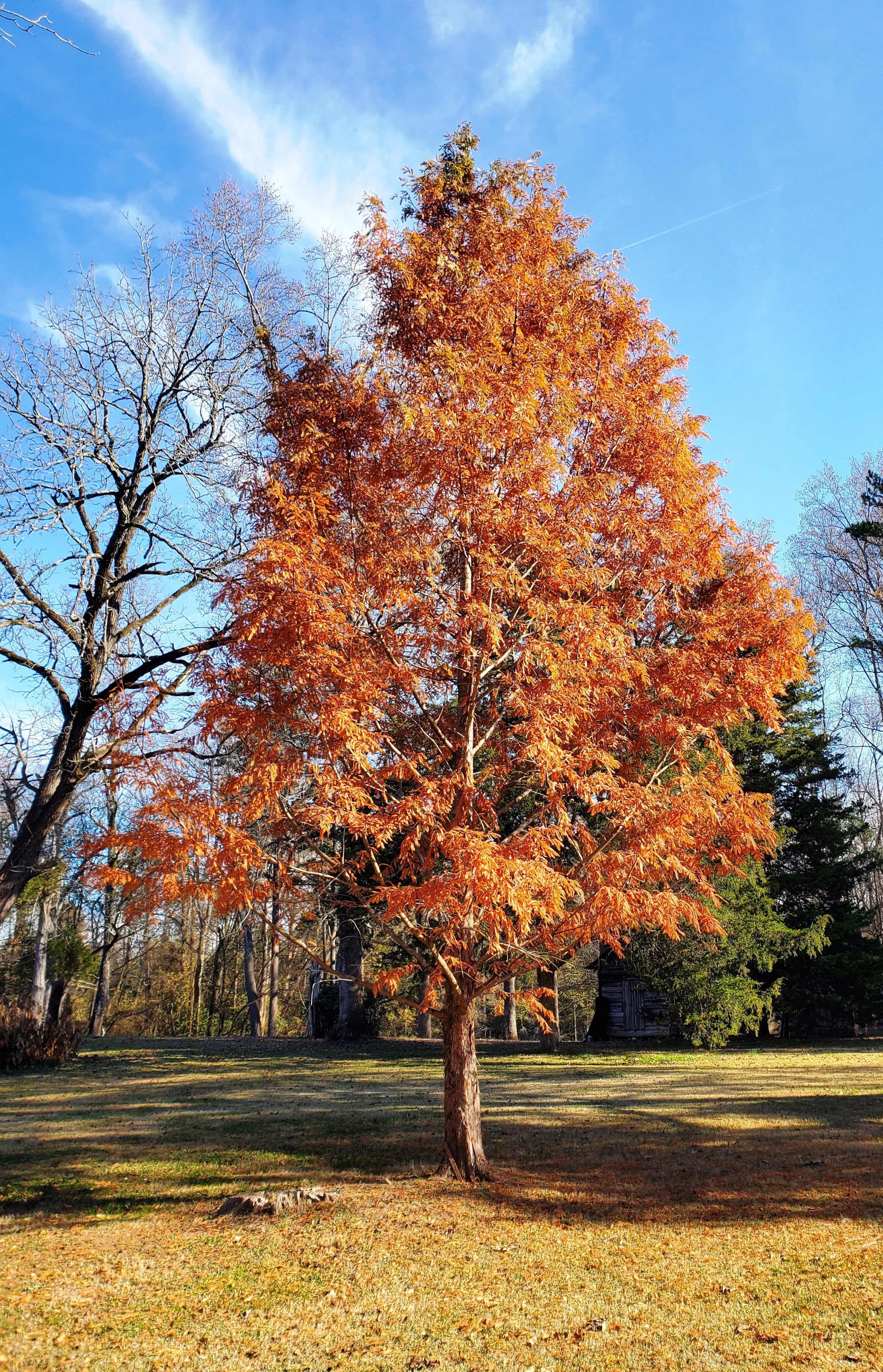The downside of relocating to a new home is the loss of favorite plants in the former garden. Sometimes these are valued for their rarity. In other cases, they serve as reminders of friendships or life milestones.
For me, leaving behind a Dawn Redwood tree was a source of sadness. I received it as a rooted cutting in 2006, at a Master Gardener plant swap. At less than a foot tall and living in a four-inch nursery pot, it was hardly imposing. Luckily, I checked my favorite reference manual (Manual of Woody Landscape Plants, by Michael A. Dirr) and learned that this scrawny specimen that resembled a green feather could reach a mature height of 100 feet with a spread of up to 40 feet.
Dawn Redwood (Metasequoia glyptostroboides, pronounced met-uh-see-KWOY-uh glip-toe-stroh-BOY-deez) is one of the few deciduous conifers. It grows fast (up to two feet per year), with a lovely pyramidal shape when young, maturing to a rounded crown. Given average growing conditions, a tree will reach 25 feet or more in ten years. They make a wonderful specimen. The tree in the zone 7 Mary Snoddy garden, now 15 years old, exceeds 30 feet. It has received no supplemental irrigation after the first year.
These trees enjoy moist, acidic soil, and will not tolerate dry locations. Mature trees have a furrowed look to the bark. They are hardy in zones 5 – 8. With age, the lower limbs droop downward with age, giving the tree a graceful look. Lower limbs may need to be removed if they block views or prevent mowing. The foliage turns a gorgeous, rusty orange before shedding in the fall.
It is easy to confuse Dawn Redwood with Bald Cypress (Taxodium distichum). Look at the leaf arrangement to distinguish the two. The half-inch needle-like leaves of Dawn Redwood are held on the stem in an opposite arrangement, while the Bald Cypress leaves spiral around the stem. Both trees will do well in soils with limited oxygen. Dawn Redwood tolerates clay soil. In swampy soil, the Bald Cypress will push up “knees” to capture air that is not available to its roots.
Dawn Redwood has no disease problems, although Japanese Beetles occasionally eat the foliage. Deer rarely browse them.
Metasequoias are propagated from cuttings or air-layering. Young Dawn Redwoods transplant easily. They can also be grown as bonsai.
This Dawn Redwood (Metasequoia) is 15 years old and stands more than 30 feet tall.
Same tree as above, showing its summer foliage color.





